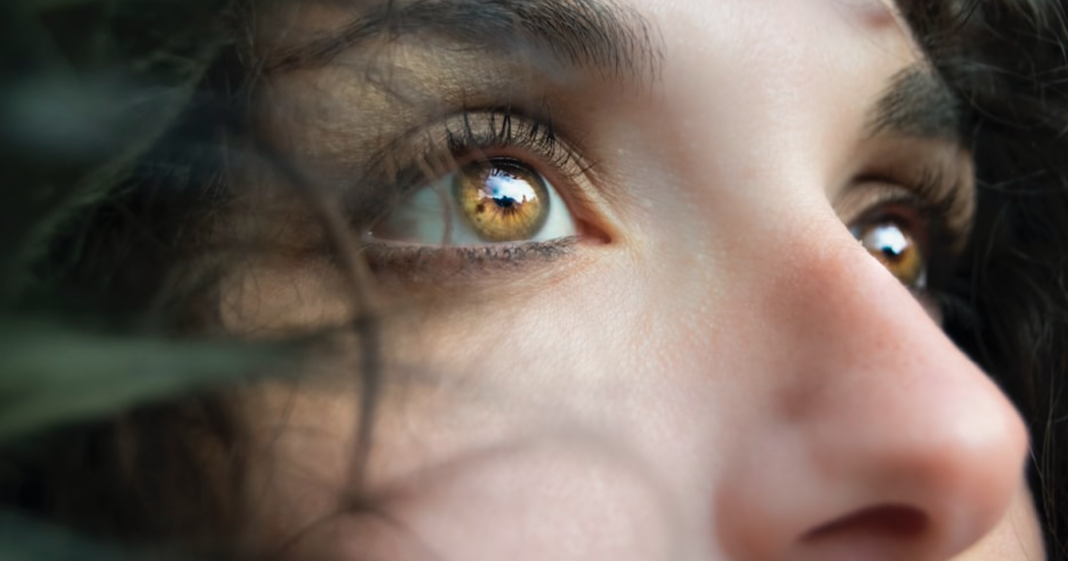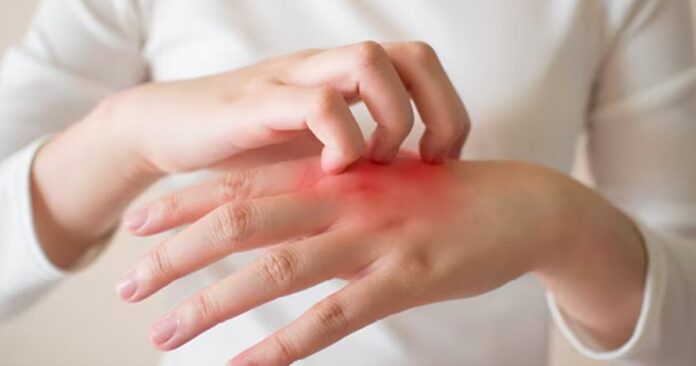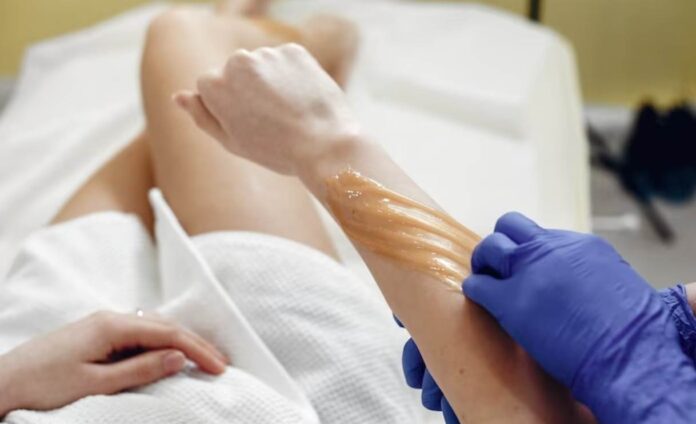Wondering how to properly remove those stubborn whiteheads that suddenly or permanently appear on your nose? This article will explore what can cause them, the strategies to make them disappear ASAP without compromising your skin, and the skincare approach to keep these imperfections at bay.
Table of Contents:
First, what are whiteheads and how are they formed?
Whiteheads are a form of non-inflammatory acne featuring a closed comedo filled with white contents. They occur when dead cells accumulate and clog the opening of a hair follicle (aka pore), preventing the sebum that’s being produced in that follicle from being released, resulting in its build-up in the form of a whitehead [1].
In general, the development of whiteheads may involve 3 main interrelated processes [2]:
- An overproduction of sebum.
- Abnormal shedding of the follicular cells (which leads to their build-up).
- Potential follicular colonization by Cutibacterium acnes.
Whiteheads are most common in areas of the face with many sebaceous glands, such as the nose. This is the reason why this area tends to be of particular concern due to the constant presence of stubborn whiteheads.
What are the causes?
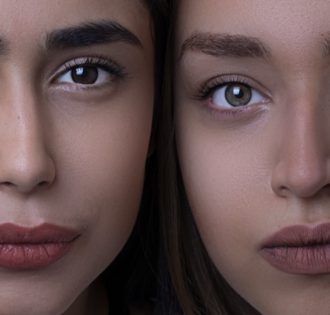 As with acne, whiteheads may be strongly related to hormonal fluctuations (such as those that occur during puberty or menstruation), where hormones tend to be responsible for inducing a higher sebum production.
As with acne, whiteheads may be strongly related to hormonal fluctuations (such as those that occur during puberty or menstruation), where hormones tend to be responsible for inducing a higher sebum production.
Nonetheless, other factors can be involved, such as [2]:
- Genetic predisposition.
- Unhealthy skin.
- Smoking.
- Stress.
- Certain foods and drinks (like those with a high glycemic index).
How to properly remove whiteheads from the nose?
First things first: avoid the urge to squeeze whiteheads at all costs! As explained by the American Academy of Dermatology Association, popping whiteheads can lead to scarring, pain, inflammation, or even infections [3].
So, what should you do instead? If you want to clear those whiteheads ASAP, some products such as hydrocolloid patches can help you in their removal safely and effectively.
- Hydrocolloid patches:
Hydrocolloid acne patches are great alternatives to clear whiteheads overnight. These patches are specifically designed with an outer water-impermeable layer to protect the area from bacteria and infection, and an internal layer made of polymeric substances that can absorb all oil, pus, and fluids from whiteheads [4].
How to use them? You can find hydrocolloid patches that adapt to the shape of the nose. Leave the patch overnight, after properly washing your face (see section below). Next morning you will see all the oil and fluid secretions attached to the patch as white spots. For better results, follow with a clay mask (see section below), as explained by Dr. Shereene Idriss.
One example? Mighty Patch Nose from Hero Cosmetics.
How to treat whiteheads with skincare strategies?
Even though hydrocolloid patches are a simple quick way to remove whiteheads overnight, what is going to help you improve their appearance in the long run is committing to a skincare routine that can mindfully target the main causes involved in their formation, namely sebum overproduction and the accumulation of dead cells clogging the pores.
Here, we listed some skincare tips you can follow at home to treat or even prevent whiteheads over time:
1. Wash your face with the right cleanser.
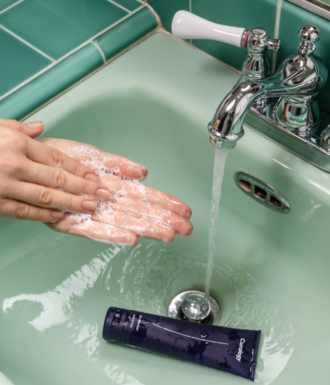 Washing your face with the proper cleanser is a vital first step of your skincare regime in order to remove all dirt, oil, sweat, and makeup trapped during the day.
Washing your face with the proper cleanser is a vital first step of your skincare regime in order to remove all dirt, oil, sweat, and makeup trapped during the day.
How to choose the right cleanser? You should choose one suitable for your skin type. Since whiteheads can be associated with sebum overproduction, opting for a foaming cleanser is a good idea. Keep in mind that cleansers shouldn’t leave your face feeling tight or dry, so looking for “gentle” formulations is recommended.
Remember: You should always add a cleansing step to your nightly routine and be careful to completely remove makeup beforehand. In case your skin tends to be way oilier, repeat the cleansing step in your AM routine.
2. Incorporate salicylic acid into your routine.
 Salicylic acid (also known as BHA: beta-hydroxy acid) is a skincare ingredient widely used to clear acne-related blemishes due to its comedolytic activity (aka the ability to unclog pores).
Salicylic acid (also known as BHA: beta-hydroxy acid) is a skincare ingredient widely used to clear acne-related blemishes due to its comedolytic activity (aka the ability to unclog pores).
BHA, as an oil-loving molecule, may go through the sebaceous glands and act in the obstructed pores, disrupting the bonds between the dead cells responsible for clogging the follicular duct. This results in their detachment and dissolution of whiteheads [5].
Many products formulated for acne-prone skin contain BHA as an active ingredient. You can find several options to add to your beauty routine, among which we can suggest:
- Cleansers formulated for whiteheads and blackheads: they normally contain salicylic acid (BHA) at 2%. To benefit from its activity, you should let the cleanser stay for about 3 minutes before washing it off, so you give time for the salicylic acid to work in the skin.
- Exfoliation products with 2% BHA: They may come as solutions or serums (see section below) and are a great way to incorporate the power of BHA into your routine in a “treatment” step.
3. Exfoliate, but don’t overdo it.
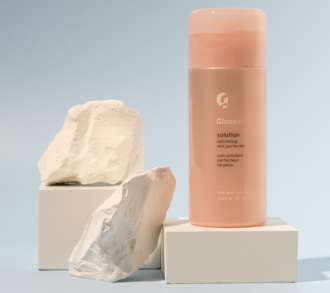 More is no more, and when it comes to exfoliants, it’s better to keep them in low concentrations. Your best option will be an exfoliant that is gentle enough to be used daily as a “leave-on” product.
More is no more, and when it comes to exfoliants, it’s better to keep them in low concentrations. Your best option will be an exfoliant that is gentle enough to be used daily as a “leave-on” product.
As mentioned, exfoliants with 2% BHA are enough to be used to treat whiteheads. The most popular examples in the market include Paula’s Choice Skin Perfecting 2% BHA Liquid Exfoliant and The Ordinary Salicylic Acid 2% Anhydrous Solution Pore Clearing Serum.
You can find BHA in combination with other exfoliants such as AHA (alfa-hydroxy acids), to support the exfoliant activity, such as Glow Recipe Strawberry Smooth BHA + AHA Salicylic Acid Serum. Avoid those products that declare high concentrations of AHA that are used for “peeling”, since they are strong and may irritate and damage your skin.
How to use these exfoliants? Start by applying the product every other day to monitor how your skin reacts and increase daily use if well-tolerated. Apply at night preferably, and use sunscreen (SPF 30 or higher) if using during the day. Avoid using retinol simultaneously to prevent irritation.
What about scrubs? Although scrubs are commonly used for exfoliation and dead cell removal, they can be harsh on the skin and cause micro-injuries, so it’s better to avoid them! An alternative can be exfoliants like Wishful Yo Glow AHA & BHA Facial Enzyme Scrub which gently removes dead cells without the use of physical exfoliating particles.
4. Apply a clay mask on the nose.
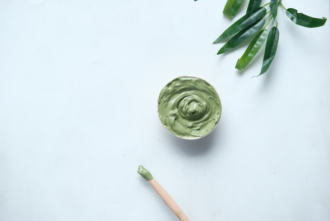 Clay masks can efficiently clear whiteheads by trapping oil and impurities present due to their high adsorption and absorption capacities [6]. They may aid the opening of pores, stimulating sebaceous secretions, and some may even have antibacterial properties against C. acnes [7].
Clay masks can efficiently clear whiteheads by trapping oil and impurities present due to their high adsorption and absorption capacities [6]. They may aid the opening of pores, stimulating sebaceous secretions, and some may even have antibacterial properties against C. acnes [7].
How to use a clay mask? Apply a layer of the product to your nose after cleansing. Let it dry for 10-15 minutes (see the instructions on your product), then rinse off with warm water. Do it once or twice a week.
5. Add retinol to your skincare practice.
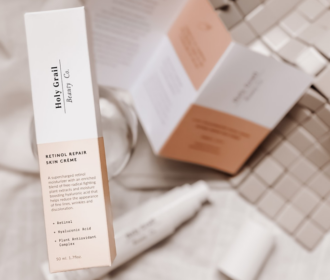 Retinol, the Vitamin A derivative popularly used in cosmetics, can also help when it comes to clearing whiteheads and blemishes.
Retinol, the Vitamin A derivative popularly used in cosmetics, can also help when it comes to clearing whiteheads and blemishes.
How it works? Retinol has been proven to modulate the cell turnover process and accelerate the shedding of follicular cells, which results in the unclogging of the pores and the expelling of whiteheads [8]. Moreover, it may regulate the function of the sebaceous glands, which can help to limit excessive sebum production [9].
How to use Retinol? Test a small area of skin before using new skincare products. If there are no reactions, apply the product at night three times per week after cleansing. Rinse your face in the morning and use sunscreen with at least SPF 30. Alternate BHA / AHA products during the week and avoid using them together to prevent skin irritation.
You can start with low doses (0.3 -0.5 %), and gradually increase the dose, as tolerated.
Cons: Avoid retinol if pregnant or if you have very sensitive skin (it can be irritant). In these cases, go for products containing the “natural retinol alternative” known as bakuchiol.
6. Opt for “Oil-free” Moisturizers and Sunscreens.
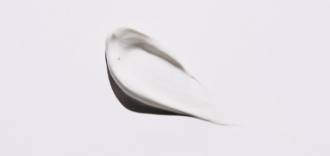 Although selecting your ideal moisturizer and sunscreen will highly depend on your skin type, whiteheads tend to be associated with excess oil production. In this sense, what’s advisable is to avoid skincare products that are greasier and oilier since they might be more occlusive and clog the pores even more [1].
Although selecting your ideal moisturizer and sunscreen will highly depend on your skin type, whiteheads tend to be associated with excess oil production. In this sense, what’s advisable is to avoid skincare products that are greasier and oilier since they might be more occlusive and clog the pores even more [1].
Opt for moisturizers and sunscreen that are “oil-free” and gel-based, either a clear water gel or a gel-cream format.
The takeaway
Removing whiteheads on the nose can be tricky, but sticking to a skincare routine can do wonders to improve their appearance and prevent them from appearing. Hydrocolloid patches are surely suitable for a quick fix, but what works best in the long run is choosing skincare products formulated to unclog pores and remove excess oil, to attack their formation at the root.
References
[1] Institute for Quality and Efficiency in Health Care (IQWiG). (2019, September 26). Acne: Overview. InformedHealth.org – NCBI Bookshelf. https://www.ncbi.nlm.nih.gov/books/NBK279211/
[2] Ogé, L. K. (2019, October 15). Acne vulgaris: Diagnosis and treatment. AAFP. https://www.aafp.org/pubs/afp/issues/2019/1015/p475.html
[3] Pimple popping: Why only a dermatologist should do it. (2022, November 16). American Academy of Dermatology Association. Retrieved August 31, 2023, from https://www.aad.org/public/diseases/acne/skin-care/popping
[4] Kuo, C., Chiu, Y., Wu, M., Li, M., Wu, C., Chen, W., & Huang, C. (2021). Gelatin/Chitosan Bilayer Patches Loaded with Cortex Phellodendron amurense/Centella asiatica Extracts for Anti-Acne Application. Polymers, 13(4), 579. https://doi.org/10.3390/polym13040579
[5] Arif, T. (2015). Salicylic acid as a peeling agent: a comprehensive review. Clinical, Cosmetic and Investigational Dermatology, 455. https://doi.org/10.2147/ccid.s84765
[6] Williams, L. B., & Haydel, S. E. (2010). Evaluation of the medicinal use of clay minerals as antibacterial agents. International Geology Review, 52(7–8), 745–770. https://doi.org/10.1080/00206811003679737
[7] Fox, L. T., Csongradi, C., Aucamp, M., Du Plessis, J., & Gerber, M. (2016). Treatment modalities for acne. Molecules, 21(8), 1063. https://doi.org/10.3390/molecules21081063
[8] Thielitz, A., & Gollnick, H. (2008). Topical Retinoids in Acne Vulgaris. American Journal of Clinical Dermatology, 9 (6), 369–381. https://link.springer.com/article/10.2165/0128071-200809060-00003
[9] Michalak, M., Pierzak, M., Krecisz, B., & Suliga, E. (2021). Bioactive Compounds for Skin Health: A Review. Nutrients, 13 (1), 203. https://www.mdpi.com/2072-6643/13/1/203

 By Gabriela Bermudez, MSc
By Gabriela Bermudez, MSc
 September 4, 2023
September 4, 2023
 7 minutes
7 minutes








